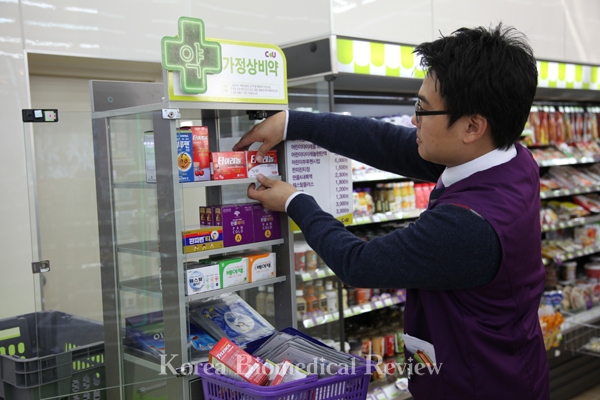Collectivism earns the ire of consumers, bureaucrats
Pharmacies around the globe are retailing two categories of drugs: Over the Counter (OTC) drugs, which are medications sold directly to consumers; and prescription medicines that require medical prescriptions to be dispensed.
What will happen, however, if a customer desperately needs non-OTC drugs at midnight when clinics and pharmacies are closed until the next morning?
This is why the Ministry of Health and Welfare announced, on Nov. 15, 2012, that it would allow four groups of medicines – antipyretic analgesic, cold medicines, digestive drugs and pain relief patches – to be sold at convenience stores around the clock.
A tense tug-of-war has since been going on between consumers and bureaucrats on one side and pharmacists on the other. Consumers called for increasing the number of such “safe household medicines” sold at C-stores for the sake of convenience, while druggists strongly oppose it, citing reasons such as safety problems and possible adverse effects.
It was against this backdrop that the ministry conducted a survey from June to November last year, which found the general public wants to add 19 kinds of drugs to those available at the convenience stores. They included antacid agents, ointments, sleeping pills, vitamin and mineral preparations, nourishing tonic detoxification agents, and external hemostatic agents.
Provision 2, Article 44 of the Pharmaceutical Affairs Act lists non-prescription drugs used for mild symptoms within a range of 13 groups, taking into account their ingredients, side effects, content, recognition, and patient convenience.

The ministry has designated the Korean Pharmaceutical Association (KPA) as the organization to deal with the sales of non-prescription drugs at the convenience stores. The KPA will also educate convenience store owners and their employees to turn them into medicine vendors.
To prevent the abuse of drugs, the ministry has also restricted the sale of OTC drugs, to one medicine to each customer, while banning their sale to children under 12.
Since the amendment of the Pharmaceutical Affairs Law, the government has tried to harmonize the two different policy goals -- enhancing access to pharmaceuticals and securing drug safety.
So far it has attained neither. While the public expressed dissatisfaction with the limited items available at C-stores, pharmacists are going all out to reduce even the current list of medicines sold at places other than pharmacies let alone increasing their scope.
"We cannot leave drug sale to part-time convenience store workers who do not have even the basic knowledge about drugs,” said a KPA official. “We will put in more efforts for the pharmacies to improve the accessibility of the drugstore at night or on holidays."
Drug sales outside of pharmacies will ultimately lead to greater economic burdens and health hazards for the public, the official emphasized.
Another factor in medicine-selling controversy is over the classification of medicinal products –between OTC drugs and prescription drugs. By classifying more medicines as prescription drugs, doctors can have more benefits by prescribing them for patients and reducing the ill effects or drug abuse. That is not entirely without problems, however, such as weakened accessibility, along with increased drug prices.
On the other hand, pharmacists want more drugs classified as OTC drugs that they can sell directly to customers, encouraging the convenience without prescription from doctors. The druggists, however, have come under fire for restricting such convenience to pharmacies, not extending it to convenience stores.
The most important criterion in all this should be consumers’ safety and convenience, industry watchers say. A user can hardly agree more. “Having general medicine in convenience stores is beneficial,” said Moon So-young, a consumer in her mid-20s. “The government can show it cares about the public’s interests, as we find it far easier to purchase medicines at convenience stores than at pharmacies that close early.”
The ministry, which has discussed the issue on two occasions through an ad-hoc committee, will fix the items in the panel’s third meeting scheduled for mid-June, based on the survey results, safety reviews and overseas case studies, ministry officials said.

